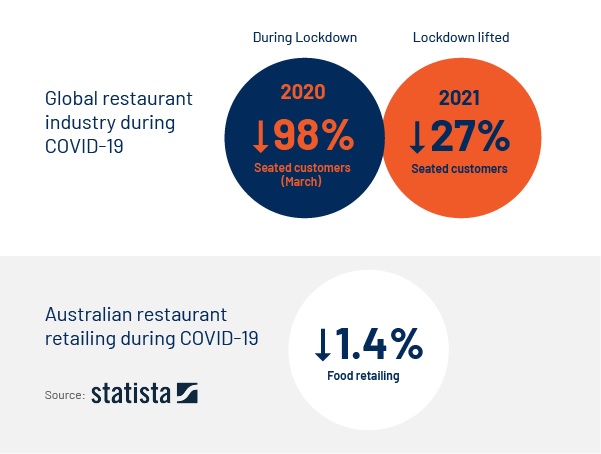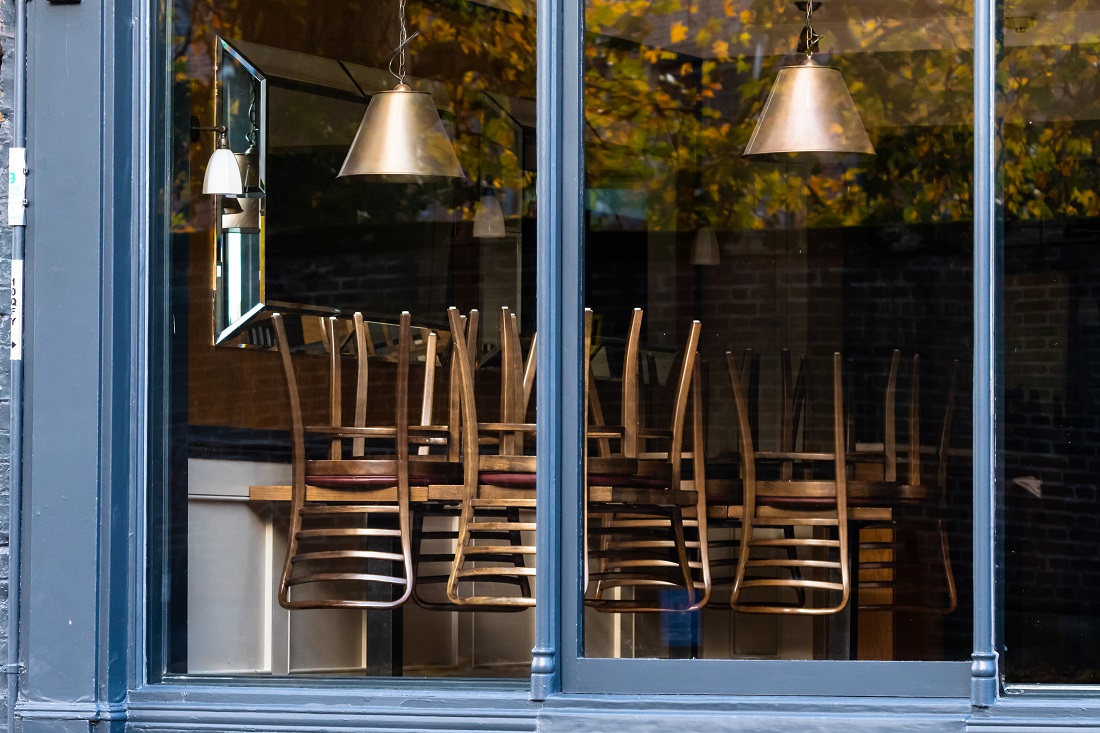
Transformation of Restaurant Design architecture & Equipment’s with post COVID – 19
The COVID-19 pandemic has affected every person and every industry, around the world. The restaurant industry was hit particularly hard, as they all had to shut their doors for a significant amount of time, however for some business this was an opportunity to re-evaluate traditional business plans and to look into growing other parts of business.
During the COVID-19 pandemic the restaurant industry has had to adapt to an increase in demand for take-away meals, and as a result some restaurants have had to upgrade their equipment to cope with the high demand.
In this article, we'll discuss some of the major influences that COVID has had on the restaurant industry, and how restaurants have had to adapt and adjust to this 'new normal'.
Rise of sales of Restaurant during COVID-19 Lockdowns in Australia
In Australia, the lockdowns that were put in place to stop the spread of the virus meant that thousands of restaurants could not operate. With this loss of revenue, many were forced to shut down for good, however for many this created opportunities not only to expand their business but also take advantage of government incentives and grants, allowing some businesses to upgrade their facilities.

According to Statista, the global restaurant industry was seriously impacted by COVID-19. In 2020, the restaurant industry lost 98% of seated customers (March). In 2021, with restrictions lifted, the world still saw a 27% decrease in the number of seated customers. According to the Australian government, food retailing fell by 1.4%, highlighting how there has been a rise in sales of restaurants during the COVID-19 lockdown.
Decline of Dine-In & Labour Cost
As highlighted, there was a significant decrease in the number of dine-in customers during the pandemic. As a result, labour costs also decreased and restaurants had to restructure their business plans by offering takeaway and home delivery services.
Rise of Take Away, Deliveries & Online Platforms
The COVID-19 pandemic has had a transformative impact on the way we eat. In order to generate revenue during the pandemic, restaurants updated their services to provide takeaway and delivery services.

Since the pandemic-related lockdowns in March 2020, the food delivery business in Australia has reached new heights. According to the Mckinsey institution, this spike during the pandemic has not reduced the growth of the food delivery business and it is not expected to decrease. Takeaway remains an easy, convenient and affordable option, for both restaurants and customers.
Restaurant Space Wastage during lockdowns with empty tables & seating

During lockdown, the 98% decrease in dine-ins had a significant impact on how restaurant space was used. Because customers couldn’t physically go to restaurants, this space went to waste. But this waste is still having a significant impact on revenue. According to the McKinsey Institute, with fewer in-house diners, overhead costs are not being paid. As a result, many restaurants may soon need to alter their architecture to accommodate these changes.
Balancing the Growth of Deliveries, take away with in-Store Dining
The most important thing that restaurants need to do is to balance the growth of their delivery services, takeaway, and in-house dining. As previously mentioned, the overhead costs of the restaurant can have a serious impact on total profit. Restaurants are losing out on high-margin purchases, such as wine and other drinks, because most people who order takeaway don’t request these, therefore, to balance this issue, delivery must cover a greater share of the restaurant’s fixed costs.
Changing of Customer Behaviour and fueling the growth of food delivery
Although the pandemic has been a catalyst for the growth of food delivery, changing customer behaviour has also significantly influenced this sector, as consumers now prefer the ease and variety of takeaway options. Many customers choose to pay a premium for takeaway services, which restaurants can use to their advantage. Indeed, many restaurants may choose to increase the prices of their deliverable food to help cover their fixed costs.
Rethink restaurant design layout
One of the most important things restaurants can do to improve their chance of survival and success during the pandemic is to rethink the way their restaurant is laid out. Here are some innovative ways restaurants can, and are, updating their architecture and equipment as a result of COVID-19.
Contact-free Robots to meet shortage of workers:

Because there is a labour shortage in Australia as a result of border restrictions, some restaurants have turned to technology to give their customers top class service during the worker shortage. For example, a Sydney restaurant is using a multi-lingual hospitality robot to meet demand. Better still, they only have to pay $34 a day to lease it out, equivalent to the cost of two-hours of wages.
Drive-through and pickup lanes with balanced seating arrangements:

Many restaurants are making big changes to their footprint. Burger King, for example, is designing new restaurants that are 60% smaller than traditional models, as a result of the increase in delivery. More drive-through lanes and more balanced seating arrangements can help cut overheads significantly.
Reinvent the menu:
Updating menus to meet current demand can improve popularity and increase restaurant revenue. As customer trends change over time, menus to, will need an update. Trends such as clean eating, paleo diets and vegan meals should be capitalized upon.
Upgrade Commercial Kitchen Equipment:

To meet the demand of takeaway requirements, kitchens may need to become bigger. Restaurants should, therefore, consider updating their equipment including stainless steel benches, stainless steel sinks and stainless steel shelves to encourage cleanliness. Having adequate cooking and storage facilities can be the difference between a successful and unsuccessful restaurant during a pandemic.
For more information about upgrading your commercial kitchen equipment, visit Stainless Express today.
 +(03) 9466 9000
+(03) 9466 9000
